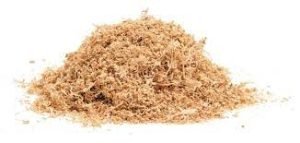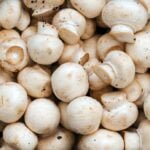Sawdust Bunnings
The Origins of Sawdust: Unveiling Nature’s Byproduct and Sustainable Applications at Bunnings
Looking for Sawdust Bunnings, a ubiquitous material in woodworking, emerges as a natural by product for mushroom cultivation. As saws cut through wood, creating intricate designs and shaping raw lumber into functional pieces, they generate fine particles known as sawdust. This seemingly humble residue, however, possesses a rich history rooted in craftsmanship and the evolution of woodworking tools.
 The journey of sawdust begins with the mechanization of woodworking processes. Traditional hand tools, while effective, could not match the efficiency and precision of their modern, mechanical counterparts. With the advent of powered saws during the Industrial Revolution, woodworkers gained the ability to mass-produce intricate designs and sturdy structures. However, this newfound efficiency came at the cost of creating a fine, dusty material – sawdust.
The journey of sawdust begins with the mechanization of woodworking processes. Traditional hand tools, while effective, could not match the efficiency and precision of their modern, mechanical counterparts. With the advent of powered saws during the Industrial Revolution, woodworkers gained the ability to mass-produce intricate designs and sturdy structures. However, this newfound efficiency came at the cost of creating a fine, dusty material – sawdust.
The creation of sawdust is a direct consequence of the physical properties of wood. As a saw blade makes contact with wood fibers, it severs them cleanly, producing small particles that take flight in the air or settle around the cutting area. The size and consistency of sawdust can vary depending on factors such as the type of wood being cut, the sharpness of the blade, and the cutting technique employed.
Beyond its practical origin in woodworking, sawdust has a tactile quality that connects artisans to the timeless art of crafting. Each particle represents a moment in the creative process, a tangible reminder of the transformation of raw materials into functional and aesthetic masterpieces. Sawdust’s journey from a raw, natural material to a finely crafted work of art symbolizes the marriage of tradition and innovation in the world of woodworking.
In the modern era, where sustainability and environmental consciousness take center stage, understanding the origins of sawdust becomes even more crucial. As woodworking techniques continue to evolve, there is a growing emphasis on responsible sourcing and waste reduction. Sawdust, once seen solely as a byproduct, is now recognized for its potential as a sustainable resource, finding new life in various applications beyond the workshop.
From its humble beginnings in the workshop to its role in contemporary sustainable practices, the origins of sawdust are deeply intertwined with the evolution of craftsmanship and the pursuit of precision in woodworking. As we continue to explore the diverse applications of this byproduct, we uncover not just the dust of the workshop floor, but a testament to the timeless artistry of creating something beautiful from the raw essence of nature. Discover sustainable sawdust options for your projects at Bunnings, a trusted provider of quality woodworking materials and environmentally conscious solutions.
At Bunnings, a comprehensive array of sawdust types is available to cater to the diverse needs of woodworking, gardening, and DIY enthusiasts. These sawdust varieties vary based on the types of wood used, treatment processes, and intended applications. Here’s a glimpse into the types of sawdust you might encounter at Bunnings:
Types of Sawdust From Bunnings
- Untreated Sawdust:
- Characteristics: This type of sawdust is in its natural state, free from any chemical treatments or additives.
- Applications: Ideal for gardening purposes, untreated sawdust is commonly used as mulch, soil conditioner, or bedding material.
- Hardwood Sawdust:
- Characteristics: Derived from hardwood species, such as oak or maple, this sawdust tends to be denser and more durable.
- Applications: Suitable for woodworking projects where a hardwood finish is desired. It can also be used in gardening applications.
- Softwood Sawdust:
- Characteristics: Originating from softwood trees like pine or cedar, this sawdust is lighter and often has a distinct aroma.
- Applications: Popular in woodworking for projects requiring a softer wood finish. Softwood sawdust can be used in gardening, but its decay resistance makes it a preferred choice for outdoor applications.
- Treated Sawdust:
- Characteristics: Subjected to chemical treatments for preservation or insect resistance.
- Applications: While not typically recommended for gardening due to the presence of chemicals, treated sawdust might find use in certain construction or woodworking projects.
- Mixed Wood Sawdust:
- Characteristics: A blend of sawdust from various wood types, offering a balanced and versatile material.
- Applications: Suitable for a wide range of projects, including gardening, woodworking, and crafting.
- Specialty Sawdust Products:
- Characteristics: Tailored to specific applications, these may include sawdust infused with additives for enhanced properties.
- Applications: Depending on the specialty product, applications can range from odor control to specific woodworking finishes.
It’s essential to consider the characteristics of each type of sawdust when selecting the right one for your project. Whether you’re working on a woodworking masterpiece, enhancing your garden, or engaging in a creative DIY venture, Bunnings likely offers a diverse selection of sawdust to meet your needs. Always check product labels and descriptions for detailed information on the types of sawdust available at Bunnings.
Sawdust In Mushroom Cultivation
Sawdust plays a crucial role in mushroom cultivation, serving as a primary component in the preparation of substrate mixes. When it comes to growing mushrooms, particularly species like oyster mushrooms or shiitake mushrooms, the composition of the substrate is vital for providing the necessary nutrients and a suitable environment for mycelial growth. Here’s how sawdust is commonly utilized in mushroom cultivation:
- Substrate Composition:
- Ingredients: Sawdust is often combined with other materials such as straw, wood chips, and sometimes agricultural byproducts like wheat bran. This mixture creates a balanced substrate that supports mycelial colonization and subsequent fruiting.
- Nutrient Content:
- Nutrient Source: Sawdust provides a source of carbohydrates and lignocellulose for the mycelium to thrive. The mycelium, the vegetative part of the mushroom fungus, breaks down the complex organic compounds in the sawdust, converting them into simpler forms that serve as nutrients.
- Sterilization and Pasteurization:
- Preparation: The substrate, including sawdust, is often sterilized or pasteurized to eliminate competing organisms that could hinder mushroom growth. Sterilization involves complete eradication of microorganisms, while pasteurization reduces microbial activity to create a selective environment for the mushroom mycelium.
- Bag Cultivation:
- Growing Environment: After the substrate is prepared, it is commonly packed into bags and sterilized. The mushroom spores or mycelium are then introduced into these bags, creating a controlled environment for the mycelium to colonize the substrate. The bags may contain a filter patch for gas exchange.
- Fruiting Conditions:
- Transition to Fruiting: Once the mycelium has fully colonized the substrate, environmental conditions are adjusted to initiate the fruiting stage. This involves exposing the substrate to fresh air, reducing temperature, and sometimes introducing light, depending on the mushroom species.
- Harvesting Mushrooms:
- Fruiting Bodies: Mushrooms begin to emerge from the substrate, and these are carefully harvested when they reach maturity. The sawdust substrate provides the necessary structure and support for the mushroom fruiting bodies to develop.
- Waste Utilization:
- Post-Harvest: After the mushroom harvest, spent substrate (the leftover material) can be repurposed. Some gardeners and farmers use spent mushroom substrate as a soil amendment in gardening due to its rich organic content.
In mushroom cultivation, the choice of sawdust type, its preparation, and the overall substrate composition are crucial factors influencing the success of the cultivation process. The use of sawdust in mushroom cultivation is not only practical but also aligns with sustainable practices by utilizing a byproduct of the woodworking industry.
Sawdust, often seen as a byproduct of woodworking, takes on a new role in sustainable practices, showcasing its versatility and eco-friendly potential. Here are several sustainable applications of sawdust:
Sustainable Practices with Sawdust
- Mulching and Soil Enhancement:
- Gardening: Sawdust serves as an excellent organic mulch, helping to retain soil moisture, suppress weed growth, and regulate soil temperature. As it breaks down, it adds organic matter to the soil, enhancing its fertility.
- Composting Material:
- Waste Reduction: Incorporating sawdust into composting systems helps balance the carbon-to-nitrogen ratio, fostering the decomposition process. Its fine texture aids in aeration and prevents the compaction of composting materials.
- Animal Bedding:
- Livestock Management: Sawdust, particularly from untreated wood, can be utilized as bedding material for animals. Its absorbent nature helps control odors and provides a comfortable environment for animals.
- Woodworking Waste Utilization:
- Resource Efficiency: Woodworking shops can implement sawdust collection systems to minimize waste. Collected sawdust can be repurposed within the workshop for projects like wood filler or utilized in external applications.
- Fire Starters and Fuel Pellets:
- Energy Efficiency: Compressed sawdust can be used to create fire starters or fuel pellets, offering an alternative to traditional fire-starting methods. This repurposes waste into a resource for heating or cooking.
- Art and Craft Projects:
- Creative Reuse: Sawdust can be incorporated into art and craft projects, contributing texture and visual interest. Mixed with glue, it can form a unique sculpting material, providing a sustainable alternative to traditional art supplies.
- Packaging Material:
- Eco-Friendly Packaging: Sawdust can be combined with biodegradable materials to create eco-friendly packaging solutions. Its natural properties make it suitable for protecting fragile items during shipping.
- Mushroom Cultivation Substrate:
- Sustainable Farming: In mushroom cultivation, sawdust is a key component of the substrate used for growing mushrooms. This repurposes the byproduct into a valuable resource for sustainable agriculture.
- Construction and Building Materials:
- Green Building Practices: Sawdust can be mixed with other materials to create sustainable building components. In some cases, it is used as an additive in the production of environmentally friendly construction materials.
- Mushroom Cultivation Substrate:
- Sustainable Farming: In mushroom cultivation, sawdust is a key component of the substrate used for growing mushrooms. This repurposes the byproduct into a valuable resource for sustainable agriculture. The mycelium, the vegetative part of the mushroom fungus, thrives on the nutrients present in the sawdust, breaking down complex organic compounds and transforming them into a fertile substrate. This practice not only minimizes waste but also supports local, small-scale farming initiatives, promoting sustainable and self-sufficient food production.
By incorporating sawdust into mushroom cultivation, a closed-loop system is created, where the byproduct of one industry becomes a vital resource for another. This symbiotic relationship showcases the potential for sustainable practices to not only reduce environmental impact but also foster innovative solutions for agricultural challenges.
Sawdust Bunnings
In conclusion, the versatility of sawdust from Bunnings extends far beyond its traditional role as a byproduct of woodworking. As a leading home improvement retailer, Bunnings showcases sawdust as an eco-friendly and practical solution for a myriad of projects. From the origins of sawdust, unveiling its nature as a byproduct of woodworking tools, to its sustainable applications, Bunnings plays a pivotal role in repurposing sawdust for various purposes.
Bunnings offers a comprehensive array of sawdust types, catering to woodworking, gardening, and DIY needs. From untreated and hardwood to softwood and specialty products, each type serves distinct purposes in diverse projects. Bunnings’ commitment to quality and sustainability is evident in its diverse sawdust offerings, empowering customers to make environmentally conscious choices.
Sawdust’s journey from a raw, natural material to a finely crafted work of art symbolizes the marriage of tradition and innovation in woodworking. In the modern era, where sustainability is paramount, sawdust has evolved from a mere byproduct to a valuable resource. Bunnings contributes to this shift by recognizing the potential of sawdust in sustainable practices, offering customers a range of options that align with responsible sourcing and waste reduction.




